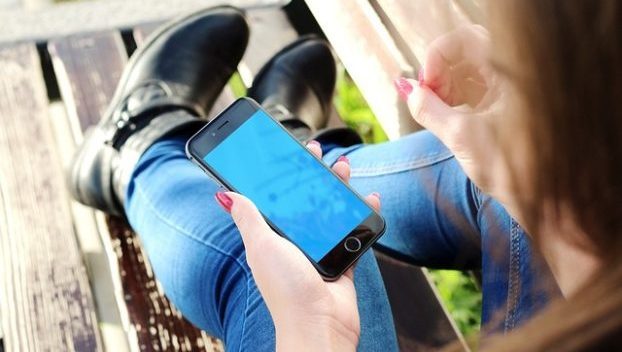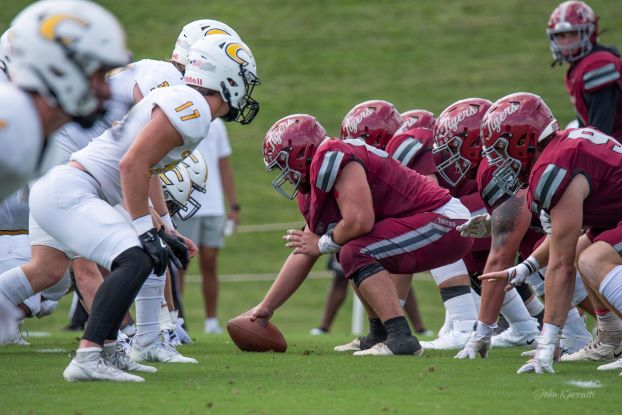Should schools be cell phone-free? It’s not that easy, officials warn
Published 7:35 am Tuesday, August 6, 2024
|
Getting your Trinity Audio player ready...
|
Once the cell phones were put up, students started learning again. That was the lesson handed out Monday, Aug. 5 from a number of teachers and administrators from across Virginia. Monday morning marked the first virtual ‘listening session’ for Gov. Glenn Youngkin’s new project, calling for school districts to work toward a ‘cell phone-free education’.
A handful of districts across the state already have cell phone bans in place during the school day and officials weighed in on their impact.
“When they had to put their cell phones in the box, it changed the environment in the classroom,” said Henrico County teacher Heather Demascio. “They had to talk to each other, learn names, make friends and socialize with each other. There wasn’t the frustration of having to tell the student to put their phone away. I can tell you it was so frustrating to have to deal with that.”
Trending
Also, Demascio said, it cut down on fighting and overall disciplinary incidents, as students were no longer going back and forth throughout the day, messaging or making videos on SnapChat, Tik Tok or Instagram until a disagreement blew up into something worse.
“When people fight, it’s all on SnapChat and Instagram,” Demascio said. “Snapchat causes many fights throughout the day because they’re communicating all the time.”
That was echoed by a number of teachers and staff. Once you take the ability to broadcast away, you eliminate their audience. Once the audience goes away, suddenly a bunch of the students no longer feel the need to fight. That’s not saying all fights stop, teachers were quick to point out, but the number dramatically drops.
A bit of a contradiction
The challenge, other school officials and parents pointed out, is that it’s not a one-size-fits-all type of situation. There are times when students need to have cell phones. While some folks might just be used to using phones for texting or calling, there are apps that can work with other technology and monitor a student’s health or give reminders when it’s time to take needed medicine. And yes, Crystal Beauvais acknowledged, prior to cell phones, this would be up to the teacher, or a nurse or school administrators.
“Having experienced several delays through the years with my five kids, that’s not always the best course of action either,” Beauvais said on Monday. She pointed out that in some districts, at times there haven’t been nurses on staff. Also, teachers can forget to remind students. Dr. Lisa Coons, Virginia’s Superintendent of Public Instruction, said in response that she and her staff are working with healthcare officials to come up with a solution to that. It was also brought up in response by some teachers that just giving kids an exemption for health reasons wouldn’t work. You would either create a situation where other students get jealous, because one person can have a phone out and they can’t or suddenly a number of students start claiming they too need to be reminded to take medication.
“We are working with our school leaders and a number of contacts across the state, superintendents, principals, to talk about how to manage these family contacts around appointments,” Coons said.
Trending
And beyond the health issue, Beauvais pointed out, is the idea that you’re going to ban cell phones to stop students from messaging, and yet the majority of classes have those same kids working on laptop computers which also have messaging functions, often built-in to the apps they have to use for class.
How to fund cell phone-free education
But there comes a problem with all this. How are smaller, rural districts supposed to fund this concept? And what would it look like? Will the state pay for an extra member of staff, to check if students have phones? Or will the state fund a resource officer for every district, to meet students at the door and collect phones?
Dr. Susan Kimbrough from the Prince Edward County School Board brought up the issue of money on Monday. Calling in to the virtual meeting, Kimbrough asked if there would be funding for this project. And the answer from Dr. Coons was yes, but only up to a point. A total of $500,000 is set aside to support implementing the new policies. That’s $500,000 to be split across all 100+ school districts in Virginia.
There is also currently no set cap on how much a school district can request from that pool of money. That means the money will be offered on a first come, first serve basis. And if you’re not one of the first districts to submit a request, chances are you’ll be out of luck.
Why this and why now?
Just as a refresher, these sessions are happening as the first step in a much larger process.
On Tuesday, July 9, Virginia Gov. Glenn Youngkin issued Executive Order 33, looking to guarantee a “cell phone-free education” to students. It doesn’t order an outright ban on phones or demand that any certain protocols be followed. Instead, he’s calling for communities to get involved and help design the rules they want to see.
Youngkin detailed how this is supposed to move forward in a series of steps, directives that school districts and the Virginia Department of Education are required to follow. There are specific deadlines to meet within the next six months, so that the project can’t drag on. In the end, the goal is to have functional policies in place for the entire Commonwealth, ready to use by Fall 2025.
First, the order calls for listening sessions to be held in each region. Monday’s was the first of several which will take place over the next month.
Second, Youngkin wants the term “cell phone-free education” defined. What does that mean? What does a cell free school look like? What is the end goal that’s being aimed for? Third and fourth, the governor wants the Virginia Department of Education to take everything from the listening sessions and develop a rough draft of both the model policy and guidance for how school districts will put it together. Fifth, for those parents who want to communicate with their children in case of emergency, etc., then there should be a way students can still check their phones if need be.
All school districts must adapt the recommendations and design their own cell phone-free education plan by Jan. 1, 2025. Finally, Youngkin orders that data from these adaptions be reviewed on a regular basis.
Cell phone-free numbers vs. the alternative
And this is a situation where there is data, beyond just testimony Monday, to back up the concept of cell phone free schools. A 2023 study by the Fordham Institute seems to back up that argument, stating that increased phone use in classes contributed to the decline seen in test scores even before the pandemic.
“We see smartphone ownership really taking off among adolescents in middle and high school around 2013,” the Fordham report states. “That’s also when median achievement on the eighth-grade math test in the National Assessment on Educational Progress (NAEP) peaked. It’s fallen modestly ever since.”
Research by the nonpartisan U.S. think tank The Conversation echoes the idea. They compared schools that had cell phones removed with others that allow cell use.
“We found banning mobile phones at school leads to an increase in student performance,” the 2022 report states. “Our results suggest that after schools banned mobile phones, test scores of students aged 16 increased by 6.4% of a standard deviation. This is equivalent to adding five days to the school year or an additional hour a week.”
One of the biggest research projects on the subject was done in Norway, by the Norwegian Institute of Public Health. More than 100 middle schools were included in the study released earlier this year, with a portion given free reign with cell phones and the rest dealing with a full ban.
The schools with a ban on cell phones saw both an increase in average GPA and reduced bullying. There were also significantly fewer doctor visits detailing mental illness for those schools and administrators reported better attendance. As for the ones where cell phone use was allowed? There were no such changes.
What happens next?
As we mentioned earlier, this was the first in a series of listening sessions planned for the next month. We say planned, but there are no set dates for the remaining sessions. Coons said on Monday she hopes to have a rough idea of the recommendations put together by mid-September, giving school districts three months to design their own plan.






